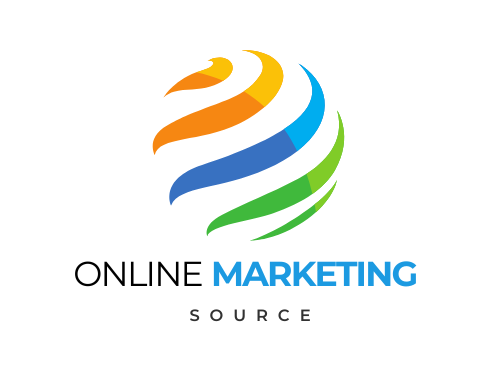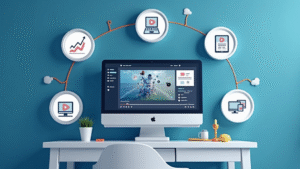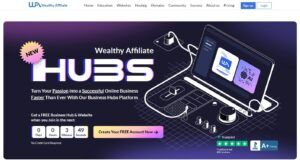In affiliate marketing, sharp and attractive visuals can make a huge difference. Attractive graphics catch viewers’ eyes and can boost clicks, engagement, and ultimately sales. Years ago, creating attention-grabbing images meant you needed to be a skilled designer, or pay one, but that’s changed thanks to AI. These days, powerful AI tools put professional quality design within reach for anyone, even if design isn’t your thing.
No matter if you’re a beginner or have been in the affiliate game for a while, learning how to use AI to make better images is a game-changer. In today’s article you’ll learn how you can use AI to design eye-catching images & graphics to boost your online marketing efforts. I’ll lay out why visuals make such a big impact, how AI can speed up your design work, some of the best tools out there, and show exactly how you can use them to polish your graphics and help your campaigns stand out.
1. Why Great Visuals Matter in Affiliate Marketing
High-quality visuals help you stop the reader’s endless scroll. On platforms like Instagram, Facebook, or X, eye-catching images can slow someone down just long enough to notice your product or offer. They need to be interesting enough for someone to actually click or tap, and that first look really counts.
When your affiliate campaign uses polished visuals, it draws more attention and gets your brand or product message across faster. If you compare a pixelated or boring stock photo to a lively custom graphic with product highlights and bold text, the difference is easy to spot. Campaigns featuring sharp, well-designed images usually see more shares, clicks, and even conversions because people feel the brand is more trustworthy and professional.
This matters just as much on landing pages and in blog posts. A strong hero image or an on-brand banner holds attention and can keep people reading about the affiliate product you’re excited to promote. Low-quality images, on the other hand, can actually drive people away, or make your promotions feel less credible.
When you use original images, your posts look less like generic ads and more like a legit recommendation. Custom graphics can also help your content blend in with your brand, whether you’re blogging, emailing, or posting on social media.
AI Image Types That Work Well:
- Featured Images for Blog Posts
- Email Newsletter Headers
- Clickable Social Media Graphics
- Website Headers & Hero Images
- Banner Ads
- Images for AI Videos
- Video Thumbnails
- Product Mockups
- Product Comparison Charts
- Infographic Elements
- Custom Call to Action Buttons
- Visual Testimonials or Quotes
- Storytelling Visuals
- Brand Logo, Avatar & Mascot
- Event Promotion Graphic
- Seasonal Promotion Banners
- Ebook or Guide Covers
- Course Module Images
- Lead Magnet Visuals
- Landing Page Art
- Presentation Slide Images
- And, The List Goes On…
2. What AI Can Do for Your Images & Graphics
AI powered design tools open up a lot of new options for affiliate marketers. Text to image tools can create unique graphics just from your written description, which saves a ton of time. If you’re trying to remove a cluttered background, brighten a dull screenshot, or resize your graphic so it fits perfectly, AI can do all of that in seconds.
Some AI tools go even further and help you build ad banners, social media posts, or product mockups automatically. For example, you can type in a prompt like “modern, blue banner for a fitness supplement sale” and get ready-made images that need just a few tweaks before posting.
- Auto generating images: Quickly produce new graphics using descriptive prompts or keywords.
- Editing & giving a boost: Remove or change backgrounds, sharpen images, and upscale low-resolution photos, all with a click.
- Templates & resizing: Instantly adapt one design to different formats (like Facebook, Pinterest, or website banners).
- Branding & mockups: Preview how your affiliate product would look in real use, giving your promotions a pro-vibe.
3. Best AI Tools for Creating Marketing Graphics
Between free and paid options, there’s an AI design tool to fit almost every budget and skill level. Here are some that are really worth checking out:
- Canva AI: Canva has added Magic Design and other smart AI features that help you start with templates or even create totally new layouts from a single idea. It’s super user-friendly, and the free version works for most basic needs.
- Artistly 4.0: Artistly is an all-in-one AI design platform that lets users generate, edit, and refine high-quality images, logos, mockups, and storybook pages from simple text or visual inputs—offering tools like inpainting, consistent characters, background removal, upscaling, and perfect text—all within a user-friendly web interface. All for a one-time fee.
- Adobe Firefly: This is Adobe’s answer to AI images, offering text to image, style customization, and background swap features. Great for custom illustrations or brand-style graphics.
- Microsoft Designer: Uses AI to make layout suggestions and generate graphics based on a prompt. It’s especially handy for social posts, website headers, or ads.
- Midjourney / DALLE: These tools are for when you want really unique, artistic images. Enter descriptive text, and they’ll generate high-quality visual art. DALLE 3 (by OpenAI) is getting a lot of buzz for its versatility and detailed outputs.
- Looka / Brandmark: Both are geared toward logo and branding creation. Super useful if you’re building niche sites or want consistent branding across your affiliate campaigns.
- VideoExpress 2.0: Quickly create professional-quality images and videos to promote products, drive traffic, and boost conversions. Its automated features—from script generation to voiceovers and editing—make video content creation fast, easy, and effective, even for beginners.
Most tools either have a permanent free version or offer free trials. Canva, for example, can get you started with no cost at all, which is nice if you’re experimenting or working solo. Paid plans unlock more advanced options, but even the basics are powerful for day to day work.
Note: My preferred AI tool for creating great images is Artistly 4.0. It’s a very versatile tool and creates great images. I especially like the enhanced prompts feature that allows me to type a basic prompt and it makes the prompt much better, resulting in a much more detailed image.
Free AI Tools to Create Stunning Images
You don’t have to spend big to get started. Free AI image tools make it easy to whip up great visuals quickly. These are worth checking out first if you’re new or on a budget.
Canva’s AI Magic Studio
Canva has AI powered image and text generators even on their free plan. If you want an Instagram post, product collage, or a fresh background, just describe what you want in a prompt, and Canva’s tools pull ideas together for you. I’ve used it to create quick banners and it saves time that I’d otherwise spend tweaking templates.
Craiyon
Craiyon (formerly DALLE Mini) is a totally free AI art generator. You type in descriptions and it spits out several images at once. The results are sometimes wacky, but with a few adjustments, you’ll find cool starting points for unique blog headers and thumbnails.
Adobe Express
Adobe Express (previously Adobe Spark) has a solid free version, now with Firefly AI image tools for noncommercial use. Its drag and drop interface is super simple, and their templates help if you need inspiration for pins, stories, or banners.
Paid AI Image Tools Worth Considering
If you’re looking for more polish, customizability, or plan to use images commercially, some paid tools take your visuals up a notch. Many offer free trials, so you can play around before spending money.
Midjourney
Midjourney is an AI art tool that works on Discord. It creates vivid, modern looking images from short prompts. You describe what you want (like “a futuristic laptop on a neon background”) and let the AI do the work. The results often look professional, which is great for affiliate landing pages or YouTube thumbnails. The paid plan unlocks unlimited, commercial use images.
Jasper Art
Jasper is popular for AI writing, but their Jasper Art feature makes creating blog graphics and featured images quick and easy. I find it handy because it ties into Jasper’s other content tools, so I can brainstorm images while drafting posts. There’s a monthly fee, but it’s super useful once you’re posting often.
DreamStudio (Stable Diffusion)
DreamStudio uses Stable Diffusion to generate custom images. You get a few free credits to test and then pay as you go. The detail and realism are really impressive, especially for product style shots or infographics. It’s popular with marketers looking to scale up designs fast.
4. How to Create Eye-Catching Affiliate Graphics with AI
I like to break the process down into a few simple steps. This helps stay focused, so you save time and still get graphics that pop.
- Define your goal: Are you making an ad, a blog feature image, or a product post? This guides your layout and content.
- Pick your AI tool: Canva is a good starting point for most graphics. Midjourney is handy if you want artistic or highly custom visuals. Choose what matches your comfort level and budget.
- Start with a clear prompt or template: Good prompts lead to better AI results. Be specific, like “clean, red banner for a summer fashion sale, with product image and discount badge.”
- Customize the look: Adjust fonts, add your clickable call to action (like “Shop Now”), and stick with your usual colors for branding. Swap images or change icons if something doesn’t fit.
- Optimize for the web: Resize to match the platform (social, web, or email banner), check the file size to keep it loading quickly, and use alt text to help with SEO.
5. Tips for Making Your AI-Generated Graphics Convert
Crafting the right prompt is surprisingly important when you work with AI image tools. A clear, specific prompt gets way better results than a vague one. Instead of typing just “coffee,” try “top view of a steaming coffee mug on a wooden desk with modern laptop and plant.” The detail gives the AI more to work with.
Tips for Better Prompts:
- Include color preferences (like “neon blue background”).
- Stick with brand colors: Using the same colors and fonts, when appropriate, builds recognition, and trust.
- Describe the vibe (“minimalist,” “vintage,” etc.).
- Add relevant objects or context (“next to a laptop,” “with a bold call to action button”).
- Feature product benefits: Short, punchy lines like “Fast Shipping” or “30% Off” draw attention. Keep it clear and relevant to your audience.
- Highlight your CTA: Make the call to action button or text bold and easy to spot. “Get Started Now” or “Shop Now” works better when it’s readable at a glance.
- A/B test designs: Try a couple of variations and see which ones perform better. Switching up background color or image placement can lead to more clicks.
- Keep experimenting! Slight tweaks can make a big difference.
Over time, you’ll find that blending creativity with clear direction yields the best images. If you’re not satisfied with the first batch, try rephrasing your request or adding more details. Don’t hesitate to think on it a bit and return to the prompt with fresh ideas.
Customizing AI Generated Images for Your Brand
AI tools give you a quick draft, but they rarely nail your exact brand look right out of the gate. Most tools let you fine tune images in an editor; think logos, overlays, custom fonts, and brand colors. I always like to add at least my website URL or a subtle logo so people instantly know the image is connected with my brand.
Tools like Canva, Adobe Express, or even Fotor make tweaking images super simple. Upload your AI generated image and add text, crop it for the right format, or layer on extra graphics as needed.
If you really want consistent branding, consider creating a few templates that use your go to fonts and colors. With templates set up, you can swap in fresh AI art as the main visual while maintaining a recognizable look across all your posts. This approach can help you build a strong, memorable presence as your online reputation grows.
Using AI for Product Comparison Charts & Infographics
Charts and infographics are really effective for affiliate content. They help explain key features and show the differences between products at a glance. Several AI tools now offer smart chart and infographic generation.
Venngage & Piktochart
Both platforms now blend AI suggestions with traditional infographic elements. They suggest layouts, icons, and color schemes that fit your topic or niche. This saves a lot of time when you’re building super detailed visuals for reviews or roundups.
ChatGPT PLUS + Canva
If you use ChatGPT PLUS, you can generate a summary or key product features, then instantly copy that info into Canva to create a graphic. This combo lets you pull together text and visuals fast, which is super important if you’re managing lots of affiliate partners.
Infographics can also boost shareability. A well structured comparison or quick tips graphic encourages readers to spread the word for you—giving your affiliate links even more reach without extra effort.
6. Common Mistakes to Avoid
- Over-relying on AI alone: AI is great, but you’ll still need to add your own touch. Customizing your images helps them feel unique instead of template based or generic.
- Cluttered layouts: Too much text or too many images can ruin the message. Keep things simple with space for the main details to breathe.
- Wandering from your brand style: Each image should match your site and past promotions. Random colors or fonts can hurt brand-recognition.
- Using low-quality images: Avoid stretching small images or saving them in low resolution. Always export at the right size and sharpness for your needs.
7. Real-World Examples
One affiliate I know used to create blog banners in PowerPoint with basic stock photos. After switching to Canva’s AI templates and DALLE for custom product images, their clickthrough rate jumped. A before and after comparison: the old banner was dark, with mismatched fonts, while the new one had a high-resolution background, bright product focus, and a large, clear button. Clicks almost doubled in just two weeks.
Another example is running split tests on Facebook ads. Using AI tools, you can pump out three or four variations in minutes, letting you fine tune what kind of image and color scheme really clicks with your audience. These quick edits are much faster than traditional design approaches, letting you scale your campaigns without long waits or extra costs.
8. Final Thoughts & Next Steps
AI powered graphics can make a big impact on your affiliate marketing. They’re easy to use, save time, and can give a boost to the overall look of your brand and promotions. Even non-designers can take their game up a notch and test new creative ideas quickly. If you haven’t tried one yet, pick a tool like Canva or Microsoft Designer and create your first custom image for your next campaign. You’ll notice it’s not only easier than you’d think, it helps your offers stand out in a noisy online world.
To keep improving, keep an eye out for new updates and features in your chosen tools, and don’t be afraid to try different prompts and layouts. Over time, you’ll start spotting which designs really connect with your audience and get more consistent results. Remember, affiliate marketing is all about making that eye-catching first impression—so let AI graphics be the secret weapon you bring to every campaign.
Are you ready to get started in online marketing or take your online business to the next level? If so, my no. 1 recommendation can be found here:
I hope you found today’s article helpful. Feel free to leave a comment below.
Until next time,
Greg Hoyt
Disclosure – The links in my articles help support my channel






AI has evolved so quickly, I do find it particularly insightful for its clear articulation of how AI is making professional-level graphic design more accessible, effectively leveling the playing field for affiliate marketers who might not have extensive design backgrounds or large budgets.
It does srill have a long way to go however the quality we are receiving so far is amazing!
Hi Clair,
Thank you for your take on using AI to create images. Image design has come a long way since I first got started and it’s only going to get better and easier.
Greg
I’ve been integrating AI-generated graphics into my affiliate marketing campaigns for a while, and the improvement in click-through rates has been significant. Using tools like MidJourney and DALL·E, I’ve found that combining AI outputs with manual edits in Photoshop creates visuals that stand out while staying true to my brand style. Consistency in color palette and typography across all platforms has helped reinforce brand recognition, and AI has made it much easier to produce these assets quickly without sacrificing quality.
Hi Slavisa,
I appreciate your input. Thanks for stopping by.
Greg